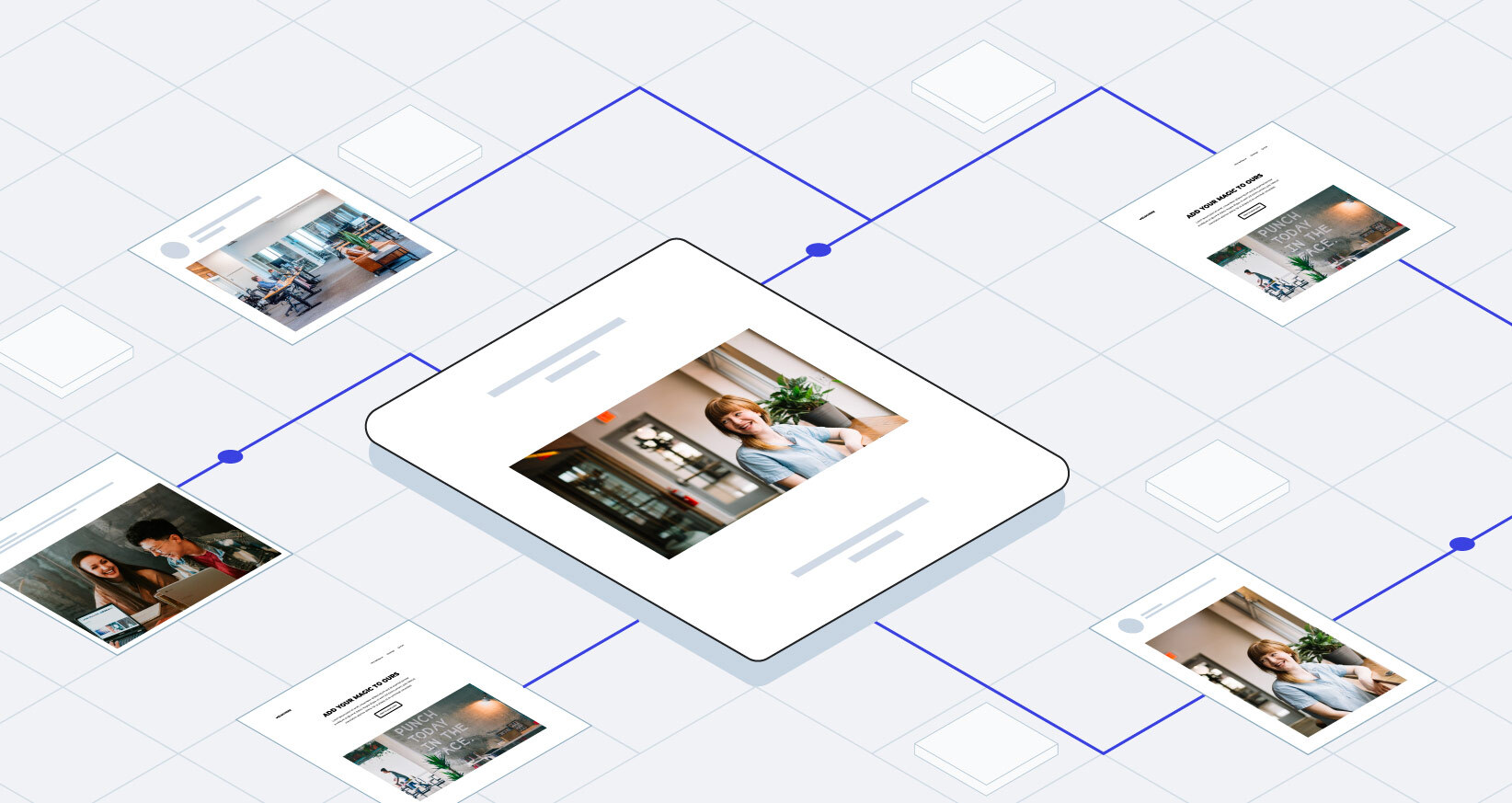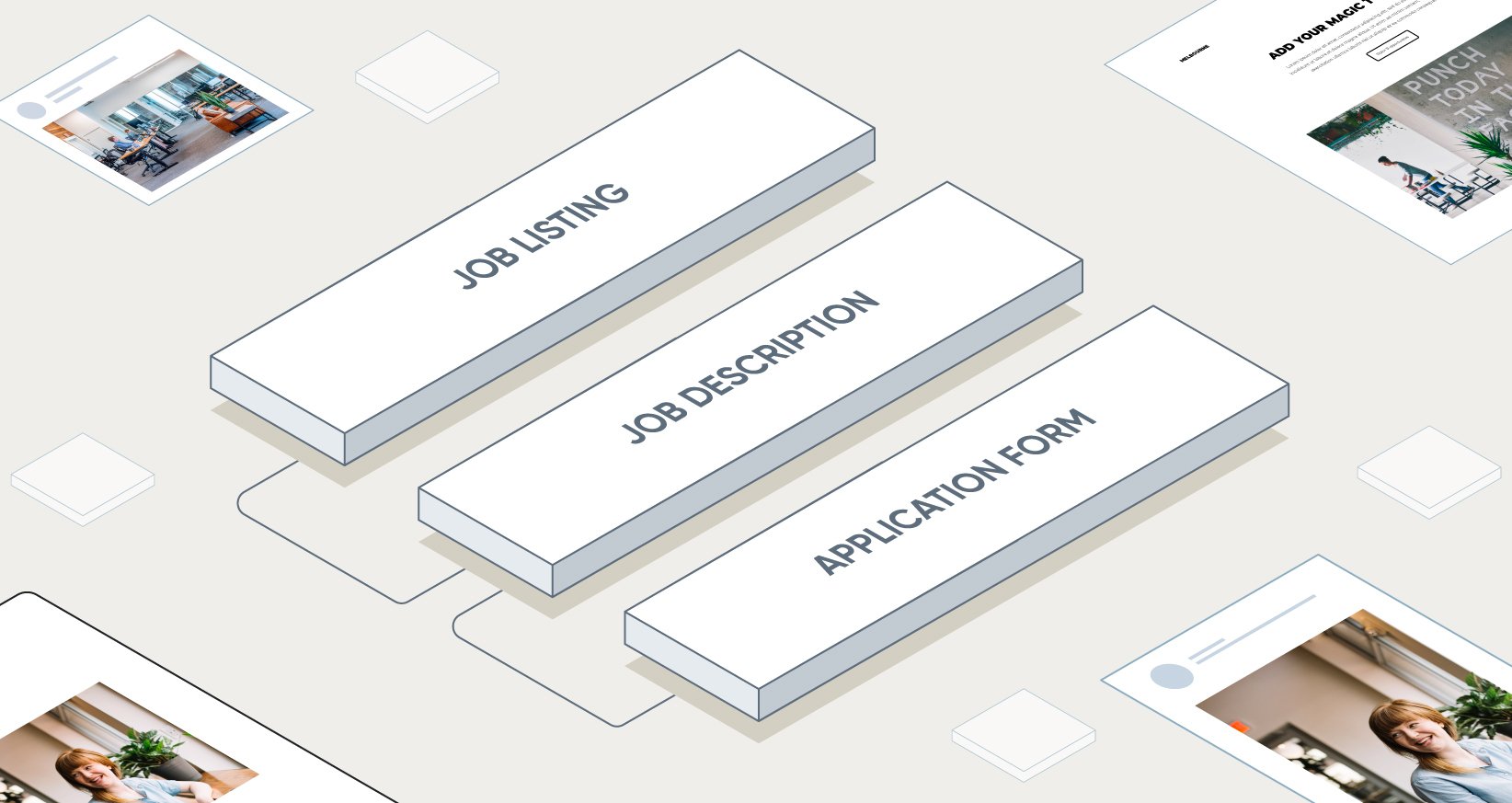They say you shouldn't judge someone until you've walked a mile in their shoes—good advice for anyone, but incredibly potent when it comes to recruitment marketing. Gaining a better understanding of what your applicants are experiencing when they encounter and engage with your company and its branding can go a long way towards informing smoother, more efficient recruiting processes. What is the best way to do this by mastering the candidate journey?
As the market has become very candidate-centric, getting candidates further down your application funnel is becoming increasingly challenging. Each candidate's journey is unique, and understanding it is crucial to improving the overall candidate experience and acquiring the best talent. Understanding what candidates go through can improve your entire hiring process to ensure that candidates don't drop out of the process.
What is candidate's journey?
Simply put, the candidate journey is the process and experiences that an applicant goes through when considering applying for a job at your company. It involves everything from exploring your brand and website to submitting a job application and participating in interviews.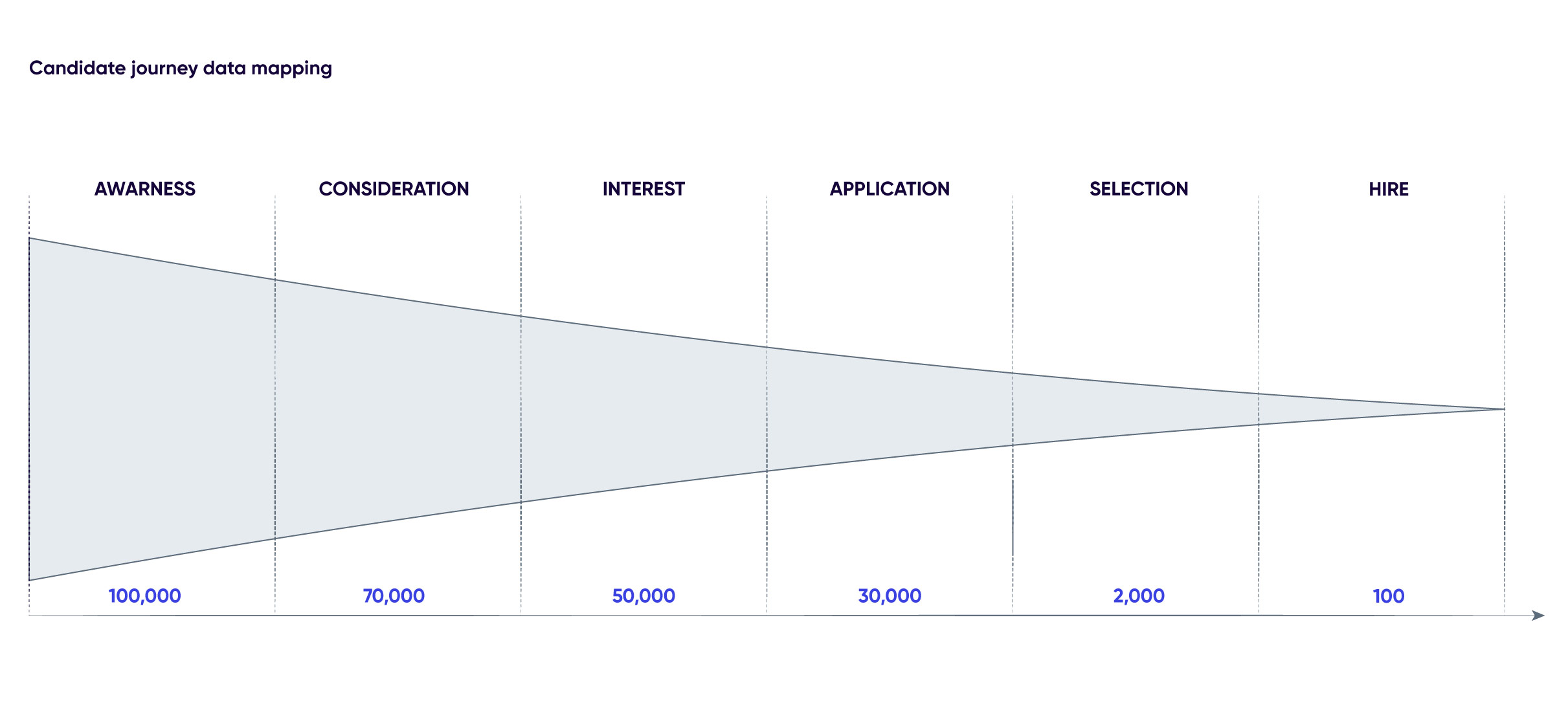 Understanding a candidate's journey allows you to visualize your candidate's experience from start to finish, identifying areas for improvement and opportunities for engagement along the way. By understanding what candidates want, need, and expect during this process, you can create more effective branding, marketing, and recruiting strategies explicitly tailored to candidate needs and preferences.
Understanding a candidate's journey allows you to visualize your candidate's experience from start to finish, identifying areas for improvement and opportunities for engagement along the way. By understanding what candidates want, need, and expect during this process, you can create more effective branding, marketing, and recruiting strategies explicitly tailored to candidate needs and preferences.
The value of this way of thinking is twofold: first, it forces recruiters to reconsider the candidate experience they're offering. Secondly, it gives recruiters a chance to reimagine the path applicants take from awareness to hiring.
A recent study found that 60% of job candidates had had a negative candidate experience at some point, and 72% of those candidates had gone on to share their woes online or in person. It's easy to see how that negative sentiment can significantly cool down successful recruitment efforts.
So, a candidate's journey doesn't just happen by chance – it takes careful planning and strategy to ensure that you effectively engage with potential candidates at each stage of the process.
There are 6 stages through which both passive and active job seekers go through:
- Awareness: This is the first point of contact with your company, where potential applicants become aware of your brand and start to consider whether they would be interested in applying to work there.
- Consideration: During this stage, candidates gather more information about your company and its offerings, often through online research and social media channels.
- Interest: At this point, the candidate begins actively investigating job opportunities at your company by searching for vacancies on your website or job boards, as well as reaching out to peers who may already be working for you to find out what it's like to work there.
- Application: Once a candidate has decided that they are interested in a position at your company, they will most likely begin the application process by submitting their resume and cover letter.
- Selection: In this stage, candidates' qualifications and skills are evaluated to determine if they meet your hiring standards. This may involve assessments or interviews with your team members.
- Hire: If you decide that the candidate is a good fit for your organization, you will extend an offer of employment to them and help them transition into their new role at your company.
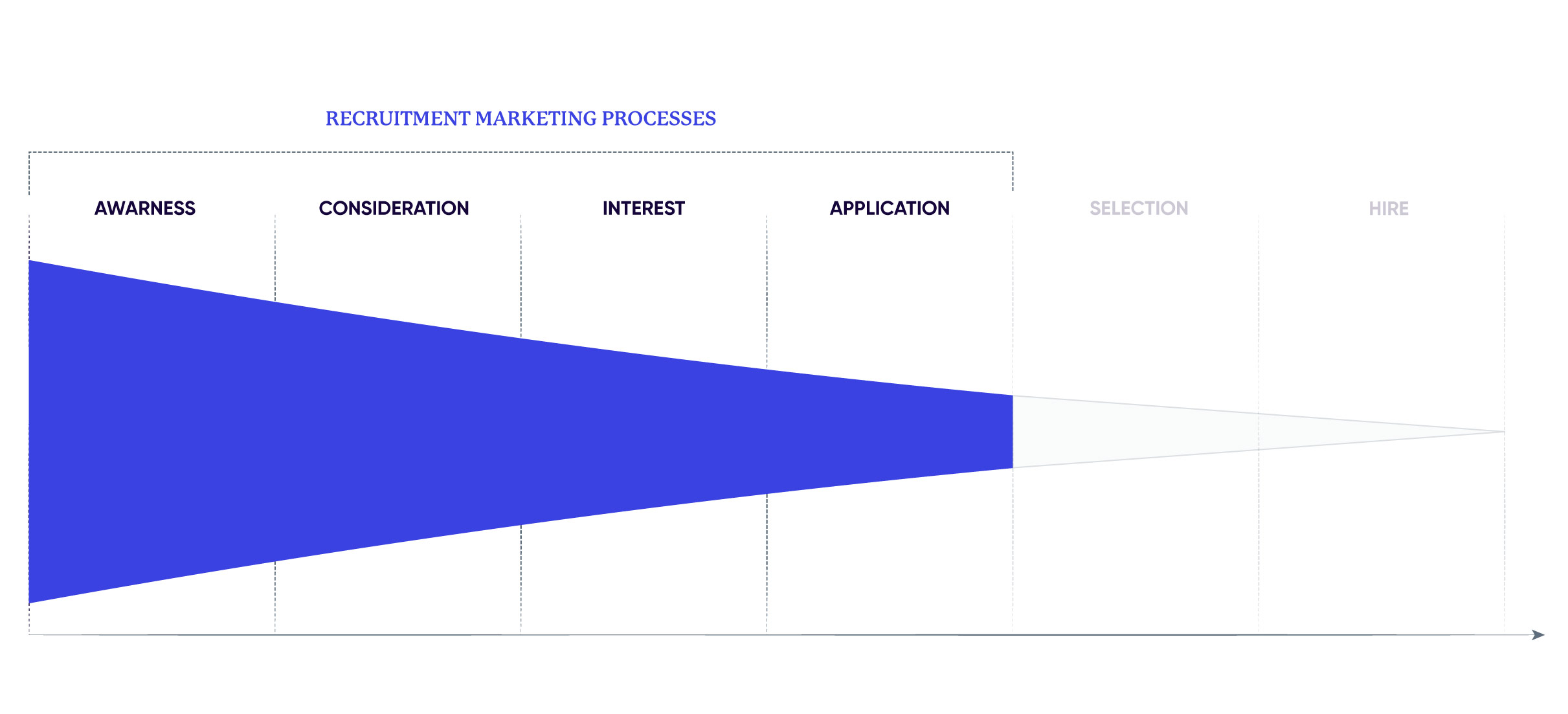
Throughout their candidate journey, candidates will have multiple interactions with your Employer Brand, both online and offline.
Active vs. passive candidates' journeys
While candidate journeys can vary depending on whether an applicant is actively seeking a job or is more passively looking for opportunities, there are some common steps and experiences that both types of candidates will go through.
For example, whether they are actively searching for jobs or not, all applicants will most likely begin their candidate journey by becoming aware of your company and its brand and evaluating whether it would be a good fit for them. They may also conduct online research, reach out to current employees, or submit applications through your website or job boards as part of this process.
A recent global LinkedIn study revealed that only 12% of people actively seek jobs. This is why recruiters have started focusing on passive job seekers, or those who are not considering a new position, during the stages of awareness, consideration, and interest.
To lead candidates through the stages of awareness, consideration, and interest, the TA teams use innovative methodologies such as Recruitment Marketing to find, attract and hire the best talent.
Talent Attraction professionals have started using Recruitment Marketing tools, like SmartDreamers, to make finding the best candidates easier. These tools not only help encourage Candidate Engagement but also improve Candidate Experience.
The Awareness Stage
These are the first candidate journey touchpoints with your company, but unlike the applicant funnel, the awareness stage of the candidate journey isn't part of a linear progression from one stage to the next. For some applicants, the awareness stage can go on for months or years before they're ready to apply. For others, especially active job seekers, it's possible to go from awareness to application within the space of a single job ad. Unfortunately for recruiters, the former seems more common than the latter. As in the case of traditional marketing, people often need to encounter your brand several times before they trust it enough to engage.

Because the awareness stage represents the first touchpoint on the journey, it's challenging to be in complete control of your company's employer branding and messaging. Potential applicants are, in many cases, likely to hear of your business for the first time while talking to friends or coworkers or reading the news. Also, depending on your industry, they might be doing research as a consumer as they are to encounter your branding through job ads or regular web traffic.
Naturally, this adds an element of chance to develop a level of trust and interest between you and your potential talent pool, but there are ways to take control of this uncertainty. The first is to be as proactive as possible about promoting your employer brand on social media and through other channels, especially those that are not traditional recruitment platforms. In this way, your employer brand will reach 80% of workers who are not actively job-seeking at any given time.
The second is to go above and beyond regarding candidate experience. By delighting every candidate who passes through your application process, you increase the likelihood that when they share their experiences in person or online, they'll help bolster your positive brand image. In this way, you can create a positive feedback loop in which delighted applicants encourage even more talented candidates to enter your recruitment pipeline. In this way, the complex, non-linear nature of the awareness stage for candidates can ultimately be a boon.
The Consideration/Interest Stage
Now, having warm and fuzzy associations in applicants' minds is all well and good. Still, the real goal of effective awareness stage content is to entice potential applicants into the next stage: consideration. When candidates have experienced a few of your touchpoints, they enter the consideration phase, where they determine if they're interested in working for your company.
This is the final step in the thought process before applying. In this step, potential candidates genuinely want to work for your company. Each piece of employer-branded content, from social media ads to instructional blog posts, should give applicants the chance to learn more about your business. Most people (even those who will eventually enter your talent pool) won't do much more digging after the first time they encounter your brand, but some will be ready to engage with you, and you've got to be prepared for them.
For blog posts and other recruitment marketing content, links and calls-to-action can lead users deeper into your career site or website and offer them the chance to learn more about your mission, culture, and values. For online ads and job listings, this means creating readable landing pages for each job listing so that users who click on your ads can access the application they want immediately without having to navigate through clutter and confusion to get there.
Creating a smooth pathway from the awareness to the consideration stage is especially crucial because consideration is, in some ways, the essential part of the journey. After all, this is the first moment in which applicants are making a conscious decision whether or not to engage with your company.
Through research on your website, word of mouth, Glassdoor reviews, and other means, these candidates are building to the pivotal point at which your employer brand and reputation either attract qualified applicants or scare off potential new hires. 8 in 10 candidates will share a positive experience with their work network and 50% will post a positive mention on a professional networking site like LinkedIn or Glassdoor.
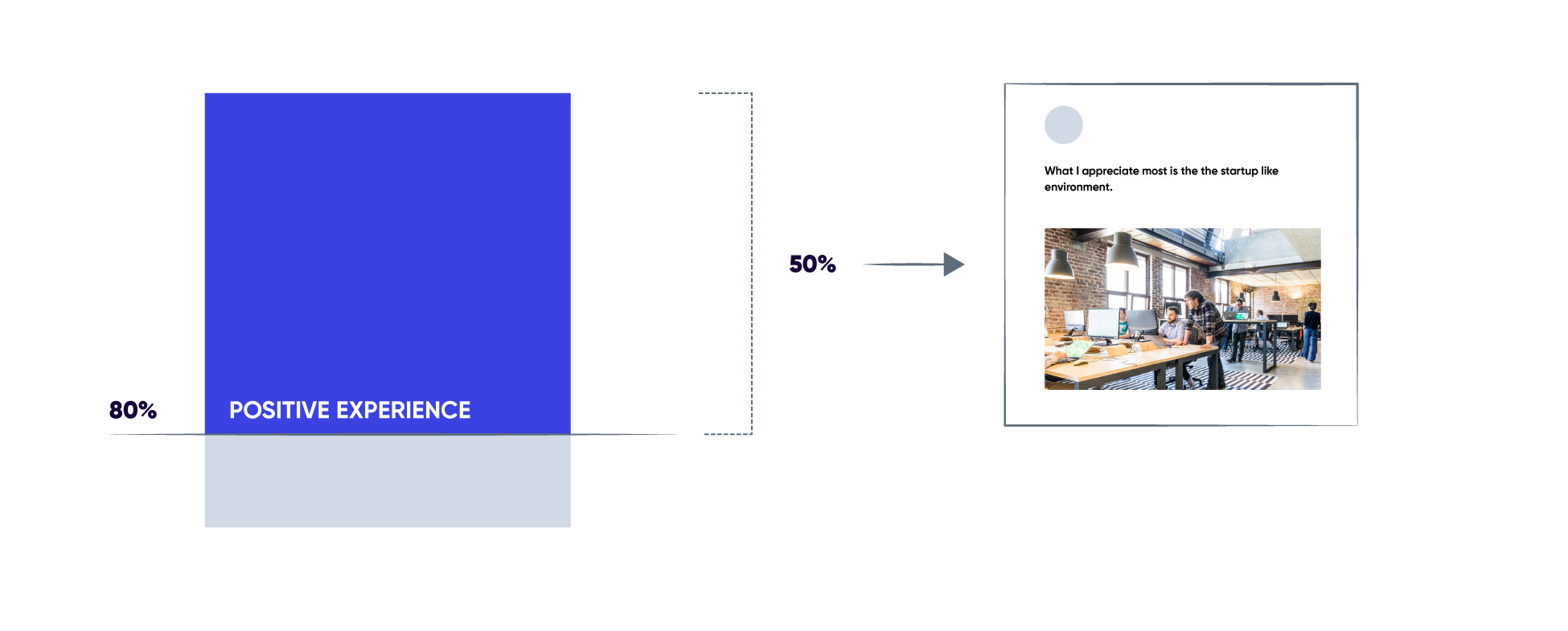
The Application/Hiring Stage
From the candidate's perspective, it may not seem like very much has happened by the time they get a response to the initial application—but recruiters know otherwise. If you're successful as a recruitment marketer, the awareness and consideration stages have given applicants enough time and information to think of your company as a trusted potential employer and, with any luck, to be delighted by your brand along the way. From here, there's still the matter of interviewing, potentially introducing candidates to their future teammates, and each side making a final decision, all of which require the same desire to delight that the earlier stages called for.
That said, paying careful attention to the early points on the candidate journey can really help to smooth out the later stages; rather than convincing skeptical talent that you're company is a great place to work, you'll be working towards a mutual understanding with an applicant who feels informed and respected.
How to improve the candidate journey
1. Have a candidate-centric approach
The journey needs to be about the candidate at every stage, otherwise, you risk alienating job seekers. The recruitment process should always revolve around the candidate and their needs/experience.
2. Have a pre-application stage strategy
You're wrong if you believe the candidate's journey starts with their application.
Most job seekers, 3 out of 4 to be exact, consider an employer's brand before applying for a job. Additionally, according to CR Magazine's study, 69% of people would not work for a company with a bad reputation--even if they were unemployed.
Before applicants decide to investigate whether or not they want to work with your company, it's crucial to think about what candidates see in you. A potential candidate's research begins the second they encounter one of your company touchpoints--whether that be through viewing your website, reading reviews, or getting an email.
3. Identify candidate needs
Hiring doesn't only focus on what your company needs, but also on what your candidates are looking for in their next job role.
It’s essential to be transparent and ask yourself, what do your candidates need to know to help them engage with your company?
According to Maslow's hierarchy of needs, candidates usually start with needing fulfillment at the bottom of the pyramid. As their physiological need is answered, they will progress to other layers like safety and security, belonging and esteem, and self-actualization.
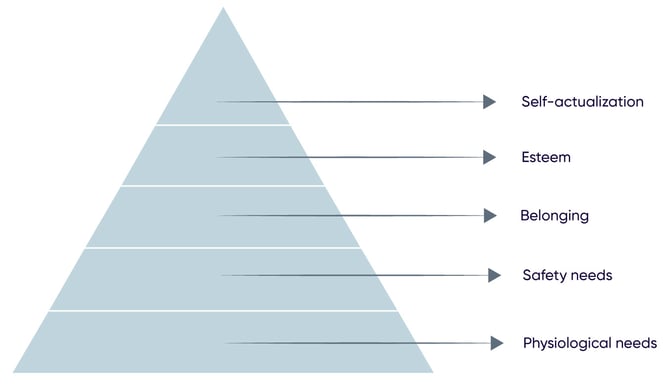
The most important factors in accepting a new job are compensation (49%), professional development (33%), and better work/life balance (29%).
4. Map the ideal candidate's journey
It's essential to have a clear vision of how your ideal candidate will interact with your company. Outline what you think are the steps they will take in their candidate journey, from becoming aware of your brand to being onboarded as an employee. Then create a chart or diagram to illustrate this process.
Mapping the candidate journey can help you see which touchpoints a candidate encounters at each stage of their process, and can help recruiters get a better understanding of what factors may impact the behavior, experience, and attitude of candidates.
By charting what the ideal candidate's journey looks like, it makes it easier to build a plan to make it a reality.
Conclusion
Competition for top talent may be at its fiercest right now, but mastering the candidate's journey can go a long way toward making your business a top destination for smart, qualified hires.
As a recruitment marketer, it is essential to understand and master the candidate's journey to engage and connect with potential job applicants effectively. By paying careful attention to the early stages of this journey and creating content that builds positive associations with your brand, you can drive more qualified candidates to your company, ultimately increasing your chances of attracting top talent.
Whether through online ads, candidate-focused blog posts, or other recruitment marketing strategies, it is crucial to create a smooth candidate journey that delights and engages potential applicants at every stage.





